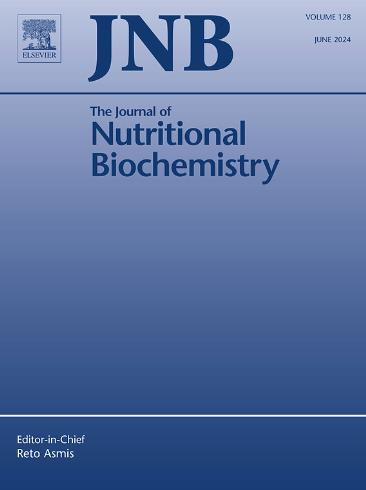Exploring the crosstalk between gut microbiota and stool metabolome in omnivorous, vegetarian, and vegan diets: A pilot study
IF 4.8
2区 医学
Q1 BIOCHEMISTRY & MOLECULAR BIOLOGY
引用次数: 0
Abstract
Gut microbiota (GM) and fecal metabolome are shaped by different dietary regimens. Nevertheless, outlining generalized patterns is challenging, due to the intrinsic heterogeneity of individual dietary choices. In this work, the fecal metabolome of adult volunteers consuming omnivorous (n=44), vegetarian (n=29), and vegan diets (n=25) for at least 12 months was characterized. The crosstalk among diet, GM and fecal metabolome was also investigated correlating metabolomics and metataxonomics data. Untargeted metabolomic profiles were correlated with metataxonomics data previously acquired on the same stool samples. The sphingomyelin SM(d18:2/18:1-2OH) and phosphoethanolamines from animal-based food were associated to the omnivorous diet and were negatively correlated to beneficial Bacteroides ovatus and Odoribacter genus. Plant glycerides, sterols, triterpenes, and oleic-linoleic acid were associated with the vegan diet. Oleic-linoleic acid was positively correlated with Alistipes putredinis. Chenodeoxycholic acid, a primary bile acid, was identified as a marker of vegan diet, while ketolithocholic acid, a secondary bile acid, was associated to the omnivorous diet. This latter was also negatively correlated to B.ovatus.
Overall, results confirm that assessing markers of dietary regimens instead of specific food categories is challenging, especially if volunteers’ diet is not strictly monitored. However, the integration of metabolomics and metataxonomic data allows to better understand the effects of specific food components on the GM and represents a suitable approach for further molecular investigation in nutrition.
探索杂食、素食和纯素饮食中肠道微生物群和粪便代谢组之间的串扰:一项试点研究。
肠道微生物群(GM)和粪便代谢组是由不同的饮食方案塑造的。然而,由于个体饮食选择的内在异质性,概述一般模式是具有挑战性的。在这项工作中,对食用杂食性(n = 44)、素食(n = 29)和纯素饮食(n = 25)至少12个月的成年志愿者的粪便代谢组进行了表征。结合代谢组学和元组学数据,研究了饮食、转基因和粪便代谢组之间的串扰。非靶向代谢组学特征与先前在相同粪便样本中获得的元组学数据相关。动物性食物中的鞘磷脂SM(d18:2/18:1-2OH)和磷酸乙醇胺与杂食性饮食相关,与有益卵形拟杆菌属和臭杆菌属呈负相关。植物甘油酯、甾醇、三萜和油亚油酸与纯素饮食有关。油酸-亚油酸含量与腐霉霉呈正相关。鹅去氧胆酸,一种初级胆汁酸,被确定为素食饮食的标志,而酮石胆酸,一种次级胆汁酸,与杂食性饮食有关。后者也与卵圆蚧呈负相关。总的来说,结果证实,评估饮食方案的标志而不是特定的食物类别是具有挑战性的,特别是如果志愿者的饮食没有受到严格监控。然而,代谢组学和元分类学数据的整合可以更好地了解特定食物成分对转基因的影响,并为进一步的营养分子研究提供了合适的方法。
本文章由计算机程序翻译,如有差异,请以英文原文为准。
求助全文
约1分钟内获得全文
求助全文
来源期刊

Journal of Nutritional Biochemistry
医学-生化与分子生物学
CiteScore
9.50
自引率
3.60%
发文量
237
审稿时长
68 days
期刊介绍:
Devoted to advancements in nutritional sciences, The Journal of Nutritional Biochemistry presents experimental nutrition research as it relates to: biochemistry, molecular biology, toxicology, or physiology.
Rigorous reviews by an international editorial board of distinguished scientists ensure publication of the most current and key research being conducted in nutrition at the cellular, animal and human level. In addition to its monthly features of critical reviews and research articles, The Journal of Nutritional Biochemistry also periodically publishes emerging issues, experimental methods, and other types of articles.
 求助内容:
求助内容: 应助结果提醒方式:
应助结果提醒方式:


